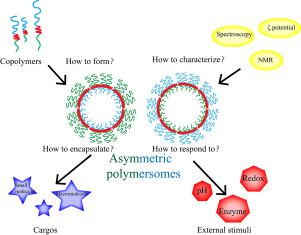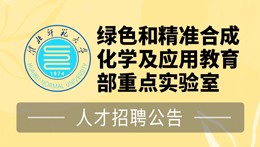Journal of Controlled Release ( IF 10.5 ) Pub Date : 2021-09-05 , DOI: 10.1016/j.jconrel.2021.09.003
Chen Guo 1 , Haoyang Yuan 1 , Yu Zhang 1 , Tian Yin 2 , Haibing He 1 , Jingxin Gou 1 , Xing Tang 1

|
Nano drug delivery systems have attracted researchers' growing attention and are gradually emerging into the public views. More and more nano-formulations are being approved for marketing or clinical use, representing the field's booming development. Copolymer self-assembly systems such as micelles, nanoparticles, polymersomes occupy a prominent position in the field of nano-drug delivery carriers. Among them, polymersomes, unlike micelles or nanoparticles, resemble liposomes' structure and possess large internal hollow hydrophilic reservoirs, allowing them to carry hydrophilic drugs. Nevertheless, their insufficient drug loading efficiency and unruly self-assembly morphology have somewhat constrained their applications. Especially for the delivery of biomacromolecule such as peptides, the encapsulation efficiency is always considered to be a formidable obstacle, even if the enormous hydrophilic core would render the polymersomes to have considerable potential in this regard. Reassuringly, the emergence of asymmetric polymersomes holds the prospect of solving this problem. With the development of synthetic technology and a deeper understanding of the self-assembly process, the asymmetric polymersomes which are with different inner and outer shell composition have been gradually recognized by researchers. It has made possible elevated drug loading, more controllable assembly processes and release performance. The internal hydrophilic blocks different from the outer shell could be engineered to have a more remarkable affinity to the cargos or could contain a non-watery aqueous phase to enable the thermodynamically preferred encapsulation of cargos, which would allow for a substantial improvement in drug encapsulation efficiency compared to the conventional approach. In this paper, we aim to deepen the understanding to asymmetric polymersomes and lay the foundation for the development of this field by describing four main elements: the mechanism of their preparation and asymmetric membrane formation process, the characterization of asymmetric membranes, the efficient drug loading, and the special stimulus-responsive release mechanism.
中文翻译:

不对称聚合物囊泡,从不对称膜的形成到药物输送的应用
纳米给药系统越来越受到研究人员的关注,并逐渐进入公众视野。越来越多的纳米制剂被批准用于营销或临床使用,代表了该领域的蓬勃发展。胶束、纳米颗粒、聚合物囊泡等共聚物自组装系统在纳米药物递送载体领域占据突出地位。其中,与胶束或纳米颗粒不同,聚合物囊泡类似于脂质体的结构,并拥有大型的内部中空亲水储库,允许它们携带亲水性药物。然而,它们的载药效率不足和不规则的自组装形态在一定程度上限制了它们的应用。特别是对于生物大分子如多肽的递送,封装效率总是被认为是一个巨大的障碍,即使巨大的亲水核会使聚合物囊泡在这方面具有相当大的潜力。令人欣慰的是,不对称聚合物囊泡的出现有望解决这个问题。随着合成技术的发展和对自组装过程的深入了解,具有不同内外层组成的不对称聚合物囊泡逐渐被研究人员所认识。它使载药量增加、组装过程和释放性能更加可控。与外壳不同的内部亲水性嵌段可以设计成对货物具有更显着的亲和力,或者可以包含非水相,以实现热力学优选的货物封装,这将大大提高药物封装效率与传统方法相比。在本文中,我们旨在通过描述四个主要要素来加深对不对称聚合物囊泡的理解并为该领域的发展奠定基础:它们的制备机制和不对称膜形成过程,不对称膜的表征,有效的载药量,以及特殊的刺激响应释放机制。与传统方法相比,这将大大提高药物包封效率。在本文中,我们旨在通过描述四个主要要素来加深对不对称聚合物囊泡的理解并为该领域的发展奠定基础:它们的制备机制和不对称膜形成过程,不对称膜的表征,有效的载药量,以及特殊的刺激响应释放机制。与传统方法相比,这将大大提高药物包封效率。在本文中,我们旨在通过描述四个主要要素来加深对不对称聚合物囊泡的理解并为该领域的发展奠定基础:它们的制备机制和不对称膜形成过程,不对称膜的表征,有效的载药量,以及特殊的刺激响应释放机制。































 京公网安备 11010802027423号
京公网安备 11010802027423号